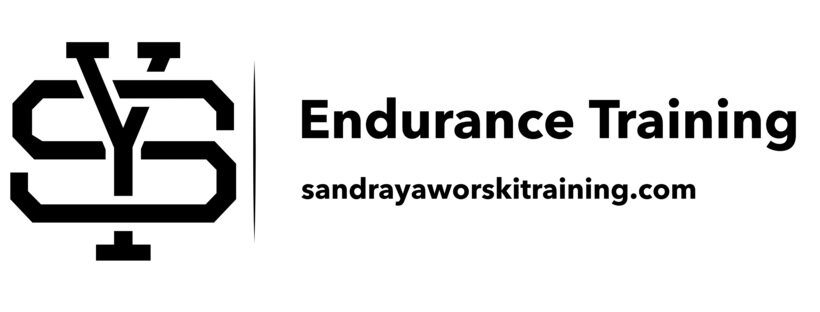If you are an endurance athlete, then you are familiar with functional threshold as it pertains to the bike and lactate threshold for the run. It is the maximum all out pace that you can sustain for an hour. The same concept is applicable to swimming and important if you’re a triathlete.
Critical Swim Speed (CSS) is used to measure your swimming functional threshold. The information I am summarizing here is from TriDot and SwimSmooth, and some research articles which I will point you to.
As endurance athlete, the most important thing is to understand pacing. Knowing your threshold pace in all disciplines of the triathlon allows for intelligent programming. Workouts can be designed with the purpose of increasing the threshold pace over time. Specific training can then be outlined which includes workouts at this threshold pace, faster (anaerobic) and easier (aerobic). Further, testing and tracking your threshold race improvement lets you know you’re getting more fit.
In running, it was Arthur Lydiard who discovered that high volume training at moderate intensities leads to increased speeds in athletes from 800m to the marathon. The same theory exists in swimming and cycling. If an athlete trains fast and short all the time, improvement is going to be minimal or not at all. Regardless of how fast you want to go, you need to train moderate intensities at longer intervals. We still include speed sessions in the training.
Determining your Critical Swim Speed (CSS) / Threshold
The there two alternative tests or methods you can conduct to determine your threshold in swimming.
Test 1 - Critical Swim Speed (CSS) Test:
The test is two-time trial swims consisting of 400- and 200-meter swims with full recovery in between.
You can then go to this handy calculator and which will calculate your CSS value.
http://www.swimsmooth.com/improve/intermediate/swim-smooth-css-calculator
Or you can use the following formula:
Critical speed = (Distance of longer test swim – distance of shorter test swim) divided by (Time of longer test swim – time of shorter test swim)
Test 2 – Functional Threshold Pace Test:
This method of calculating threshold is to perform a 30-minute swim as fast as your can and record how far you covered. To calculate the equivalent to the one -hour effort, multiply by two and subtract 2.5 percent.
Determining your Pace Zones
Now you can calculate the rest of your pacing from Zone 1 to Zone 5: recovery, endurance, tempo, V02 and anaerobic sprints. These swim paces should be used mainly for pool training purposes. T-pace, in the chart below, is the pace calculated from the test you conducted.
Zone 1 (recovery) - T-pace plus 17 seconds or slower
Zone 2 (endurance) - T-pace plus 7 seconds to T-pace plus 17 seconds
Zone 3 (tempo) – T-pace plus 2 seconds to T-pace plus 7 seconds
Zone 4 (threshold) - T-pace minus 2 seconds to T-pace plus 2 seconds
Zone 5 (anaerobic) - 0:00 to T-pace minus 2 seconds
Endurance Training
Design you week such that part of your week is spent training below threshold pace, some part at threshold pace, and some part above threshold pace.
Ironman
Individuals who can complete the 3.8-kilometer swim in under an hour are training to race a solid tempo effort. Those that are longer than an hour will be aiming to race closer to an endurance pace. In training, both groups will need to train at both paces.
Example workouts:
Tempo sets – 50 minutes or 2.5 kilometers of swimming. A main set would be 12x200 with 30 seconds rest.
Endurance sets – 3 to 4 km in length. For example, 4 x 1km with 15 to 30 seconds rest.
Half Ironman
Most triathletes complete the 1.9-kilometer swim in under an hour. This means training is about preparing for a tempo effort. Those completing the distance in under 40 minutes, race pace is in between a tempo and threshold effort.
Example workouts:
Tempo sets – progressively increase sets to 2.5 kilometers.
Endurance – 2.5 to 3 km.
Types of workouts
Threshold
Warm-up
300 easy
6x50 drills
200 pull
4x50 descend on 40/45/50/55/60 seconds
Main Set
4x100 at threshold with 10 seconds rest
200 at threshold with 15 seconds rest
4x100 at threshold with 10 seconds rest
300 at threshold with 20 seconds rest
4x100 at threshold with 10 seconds rest
400 at threshold
Cool-down
200 easy
Speed
Warm-up
200 easy
200 as 25 drill / 25 swim / 25 kick on back / 25 swim
4x50 on 40/45/50/55/60 seconds as:
#1 25 fast / 25 easy
#2 25 easy / 25 fast
#3 fast
#4 easy
4x75 build on 60/65/70/75/80 seconds
Main set
4x100 @ T-2 seconds on a send off that gets you 4 to 6 seconds rest
4x100 @ T-3 seconds on a send off that gets you 8 to 10 seconds rest
4x100 @ T-4 seconds on a send off that gets you 12 to 14 seconds rest
4x100 @ T-5 seconds on a send off that gets you 16 to 18 seconds rest
4x100 @ T-6 seconds on a send off that gets you 20 to 22 seconds rest
Cool-down
200 easy
Endurance
Boring, but you will become faster.
All sets and intervals have 20 seconds rest between.
4x400 @ T+6 seconds / 100
3x400 @ T+5 seconds /100
2x400 @ T+4 seconds /100
400 @ T+3 seconds /100
Supporting Research
Here are some worthwhile links:
http://www.scielo.br/pdf/rbme/v13n3/en_v13n3a13.pdf
https://www.ncbi.nlm.nih.gov/pubmed/11842355
https://www.researchgate.net/publication/11519417_Validity_and_Reliability_of_Critical_Speed_Critical_Stroke_Rate_and_Anaerobic_Capacity_in_Relation_to_Front_Crawl_Swimming_Performances
http://www.gotri.ie/wp-content/uploads/2011/03/USA-Swimming-Age-Group-Training-Paces.pdf
https://youtu.be/wooLaOhLg6U


